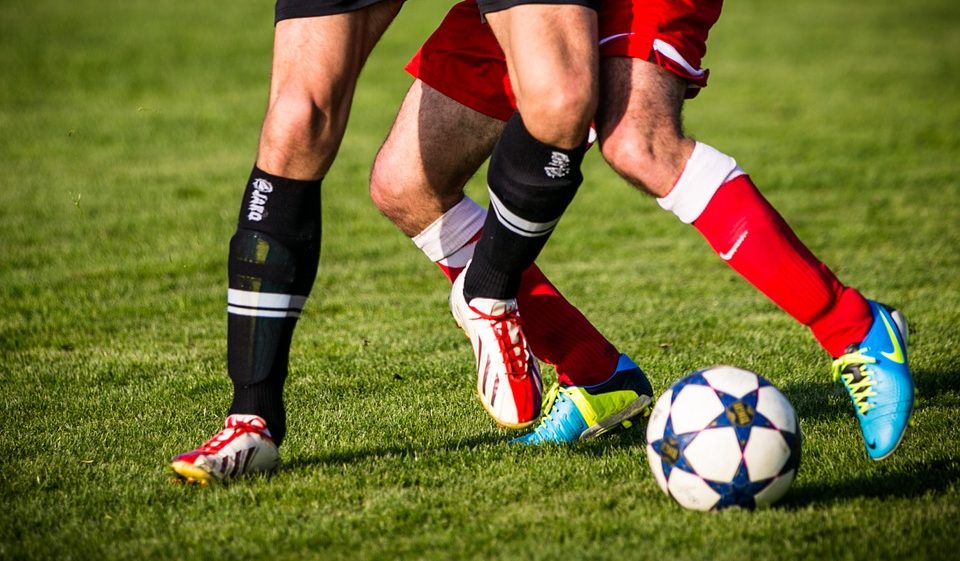The Evolution of Football Boots
Posted: January 20, 2020
Updated: January 20, 2020
-
Heavy boots around a muddy field
-
The Predator
-
Boots from Tron

Introduction: The Evolution of Football Boots
The evolution of football boots has been a long journey. Soccer boots, football shoes, or boots and cleats are the footwear of the football field. They are instantly recognizable thanks to the studs or cleats to help grip the pitch during a game. Just like online sports books in the UK, they are an integral part of the game. But how did they come about? Let’s have a look into the evolution of football boots.
The Early Days
The year 1891 is important. Before this, players simply wore their work boots. Often these were heavy, with each boot weighing in at 1/2 kilo, and double that when wet. Often these boots had steel toe caps which are great in the factory situation, but much less suited to accidentally kicking someone’s shins. They were certainly not for running and kicking. But after this year, shoes started to appear with small studs or bars that helped grip the soil. They were of leather construction with laces up to the ankle for better protection. So so begins the football boots journey to the ultra modern computer generated style we see today.

The 1900’s
At the beginning of the century up until the end of the Second World War, there was little change to the boot design. It was the same with goal posts. With so many men off to fight, there simply wasn’t much demand. It should be pointed out that the brands of Gola (originally known as Bozeat) and Valsport were popular. It wasn’t until after the second World War that real changes were to spur the evolution of football boots. New materials and research into design produced a much lighter yet stronger boot. Boots became lower as foot safety took a back seat to agility.
The 1950’s
The German company, Adidas came up with the screw in stud in the early 1950’s. These interchangeable studs were available in either rubber or plastic and were for different pitch conditions. Though boots were becoming lighter, it was their design changes that were most noticeable. The same story with online sports books in the UK. Up until the 1970’s football boots were only available in black. But that was to change as companies began to experiment with different colors, as well as materials. The first white boots were a pair of Hummel’s and were worn by Everton’s Alan Ball, and he was referred to as “Twinkle Toes” from then on. It’s not sure if he wore them in the bath.

The Predator
The eight’s saw the introduction of what were to go on and become the modern football boot. Brands such as Copa Mudial and Puma King being the boot of choice for many professional players. It was during this period that the world’s most popular boot was created. The “Predator” by Adidas. Having rubber strips on the top, the same as on table tennis bats. thus allowing for a greater grip on the ball and increases to both power and spin. According to online sports book news in the UK, it was a world wide sensation. And a brand to bet on. Around this same time, the idea of players receiving endorsements to wear a specific brand of boot came about. started to have an impact as well. The Nike Murcuial was also popular, particularly as a faster boot for running. Their boot, the Tiempo Premier was a huge hit during the 1994 World Cup in the USA. The early 2000’s saw further evolution to the sole of the shoe to allow more flexibility. The Predator incorporated these new changes and continued to hold it’s position as the world’s number one boot.

The Evolution of Football Boots: Present Day Trends
Though out the 2,000’s, Adidas continued to dominate with their Predator. Today, thanks to advances in computer and laser technology, shoes can be custom fit for an individual player. Thanks to modern processes, boot design has become a science, with cutting edge materials and rigorous testing. Designed for comfort and curving the ball. Personalizing is also a thing today, with professional players having their number or name on the boot itself. Studs have given way to blades for better grip. In fact screw-in studs are no longer in favor thanks to injuries. There are even boots that contain a micro-chip, thus allowing the player to track his performance after the game. This modern technology has allowed betting companies like Bet 365 Sportsbooks to be easier and faster to use than ever. Technology isn’t standing still and we’ll have to see just how much the evolution of football boots with change in the coming years.












